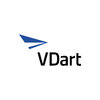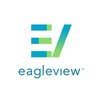Filter interviews by
Charter Global Chartered Accountant Interview Questions and Answers
15 Interview questions
Triple balance sheet refers to the three financial statements - balance sheet, income statement, and cash flow statement.
Triple balance sheet is a comprehensive financial reporting system that includes three financial statements.
The three financial statements are balance sheet, income statement, and cash flow statement.
The balance sheet shows the company's assets, liabilities, and equity at a specific point in tim...
Accounting is the process of recording, classifying, and summarizing financial transactions to provide information that is useful in making business decisions.
Accounting involves recording financial transactions such as sales, purchases, and payments.
It also involves classifying these transactions into categories such as assets, liabilities, and equity.
Finally, accounting involves summarizing this information in f...
First in first out (FIFO) is a method of inventory valuation based on the assumption that the first goods purchased are the first goods sold.
FIFO assumes that the oldest inventory items are sold first
It is commonly used in industries where perishable goods are sold
FIFO results in higher cost of goods sold and lower net income during periods of inflation
Example: A grocery store selling fruits and vegetables would u...
LIFO is a method of inventory valuation where the last items purchased are assumed to be sold first.
LIFO assumes that the last items purchased are sold first
It is commonly used in industries where the products have a short shelf life
LIFO can result in higher cost of goods sold and lower net income during inflationary periods
Example: A grocery store using LIFO will assume that the last batch of milk purchased will ...
Cost accounting is the process of recording, classifying, analyzing, and allocating costs associated with a product or service.
It helps in determining the cost of production
It helps in cost control and cost reduction
It helps in decision making by providing cost data
It involves the use of various techniques such as standard costing, marginal costing, etc.
Example: A company uses cost accounting to determine the cost...
A balance sheet is a financial statement that shows a company's assets, liabilities, and equity at a specific point in time.
It provides a snapshot of a company's financial position.
Assets are listed on the left side and liabilities and equity on the right side.
The balance sheet equation is Assets = Liabilities + Equity.
It helps investors and creditors evaluate a company's financial health.
Examples of assets includ...
A ledger is a book or computer program used to record financial transactions.
A ledger is used to keep track of all financial transactions in a business
It contains separate accounts for assets, liabilities, income, and expenses
Ledgers can be physical books or digital software programs
They are essential for accurate financial reporting and analysis
Examples of ledger software include QuickBooks and Xero
A contingent asset is a potential asset that may be gained or lost depending on the occurrence of a future event.
Contingent assets are not recognized in financial statements until the event that triggers their existence occurs.
Examples of contingent assets include pending lawsuits, insurance claims, and potential tax refunds.
Contingent assets are disclosed in the notes to financial statements.
Contingent assets are...
An interview is a formal conversation between an interviewer and an interviewee to assess the suitability of the latter for a job or position.
An interview is a two-way communication process where the interviewer asks questions and the interviewee answers them.
The purpose of an interview is to evaluate the skills, knowledge, and experience of the interviewee and to determine if they are a good fit for the job or po...
Final account is the summary of a company's financial transactions for a specific period.
Final account includes the balance sheet, profit and loss statement, and cash flow statement.
It shows the financial position of the company at the end of the accounting period.
Final account is used to evaluate the company's performance and make financial decisions.
Examples of final accounts include annual reports and financial...
Charter Global Chartered Accountant Interview Experiences
1 interview found
I applied via Company Website and was interviewed in Nov 2022. There were 3 interview rounds.

Assignment must be consists of 20 pages
(15 Questions)
- Q1. What is final account
- Ans.
Final account is the summary of a company's financial transactions for a specific period.
Final account includes the balance sheet, profit and loss statement, and cash flow statement.
It shows the financial position of the company at the end of the accounting period.
Final account is used to evaluate the company's performance and make financial decisions.
Examples of final accounts include annual reports and financial stat...
- Q2. What is accounting and what are characteristic
- Ans.
Accounting is the process of recording, classifying, and summarizing financial transactions to provide useful information to stakeholders.
Accounting involves recording financial transactions such as sales, purchases, and payments.
It classifies these transactions into categories such as assets, liabilities, and equity.
It summarizes this information in financial statements such as balance sheets and income statements.
Acc...
- Q3. What is mean by an interview
- Ans.
An interview is a formal conversation between an interviewer and an interviewee to assess the suitability of the latter for a job or position.
An interview is a two-way communication process where the interviewer asks questions and the interviewee answers them.
The purpose of an interview is to evaluate the skills, knowledge, and experience of the interviewee and to determine if they are a good fit for the job or positio...
- Q4. What in contingent asset
- Ans.
A contingent asset is a potential asset that may be gained or lost depending on the occurrence of a future event.
Contingent assets are not recognized in financial statements until the event that triggers their existence occurs.
Examples of contingent assets include pending lawsuits, insurance claims, and potential tax refunds.
Contingent assets are disclosed in the notes to financial statements.
Contingent assets are not ...
- Q5. What is liability and character
- Ans.
Liability refers to the legal obligation to pay debts or fulfill other obligations. Character refers to the moral and ethical qualities of a person.
Liability is a financial obligation that a person or company owes to another party.
It can be in the form of loans, mortgages, or unpaid bills.
Character refers to the personal qualities of an individual, such as honesty, integrity, and responsibility.
It is important for a ch...
- Q6. What is contingent liability
- Ans.
Contingent liability is a potential obligation that may or may not occur in the future.
It is a liability that depends on the occurrence of a future event.
It is not a certain liability and may or may not happen.
Examples include lawsuits, warranties, and guarantees.
Contingent liabilities are disclosed in the notes to financial statements.
- Q7. What is mean by ledger
- Ans.
A ledger is a book or computer program used to record financial transactions.
A ledger is used to keep track of all financial transactions in a business
It contains separate accounts for assets, liabilities, income, and expenses
Ledgers can be physical books or digital software programs
They are essential for accurate financial reporting and analysis
Examples of ledger software include QuickBooks and Xero
- Q8. What is mean by balance sheet
- Ans.
A balance sheet is a financial statement that shows a company's assets, liabilities, and equity at a specific point in time.
It provides a snapshot of a company's financial position.
Assets are listed on the left side and liabilities and equity on the right side.
The balance sheet equation is Assets = Liabilities + Equity.
It helps investors and creditors evaluate a company's financial health.
Examples of assets include cas...
- Q9. What is meant by corporate account
- Ans.
Corporate account refers to the financial records of a company or organization.
Corporate account includes all financial transactions, assets, liabilities, and equity of a company.
It is used to track the financial health of the company and make informed decisions.
Corporate account is managed by the finance department and is audited by external auditors.
Examples of corporate accounts include balance sheets, income statem...
- Q10. What is mean by cost accounting
- Ans.
Cost accounting is the process of recording, classifying, analyzing, and allocating costs associated with a product or service.
It helps in determining the cost of production
It helps in cost control and cost reduction
It helps in decision making by providing cost data
It involves the use of various techniques such as standard costing, marginal costing, etc.
Example: A company uses cost accounting to determine the cost of p...
- Q11. What is mean by last in first out
- Ans.
LIFO is a method of inventory valuation where the last items purchased are assumed to be sold first.
LIFO assumes that the last items purchased are sold first
It is commonly used in industries where the products have a short shelf life
LIFO can result in higher cost of goods sold and lower net income during inflationary periods
Example: A grocery store using LIFO will assume that the last batch of milk purchased will be so...
- Q12. What is mean by first in first out
- Ans.
First in first out (FIFO) is a method of inventory valuation based on the assumption that the first goods purchased are the first goods sold.
FIFO assumes that the oldest inventory items are sold first
It is commonly used in industries where perishable goods are sold
FIFO results in higher cost of goods sold and lower net income during periods of inflation
Example: A grocery store selling fruits and vegetables would use FI...
- Q13. Describe the process of accounting
- Ans.
Accounting is the process of recording, classifying, summarizing and interpreting financial transactions.
Recording financial transactions in journals and ledgers
Classifying transactions into appropriate accounts
Summarizing the transactions into financial statements
Interpreting the financial statements to make business decisions
- Q14. Definition of accounting
- Ans.
Accounting is the process of recording, classifying, and summarizing financial transactions to provide information that is useful in making business decisions.
Accounting involves recording financial transactions such as sales, purchases, and payments.
It also involves classifying these transactions into categories such as assets, liabilities, and equity.
Finally, accounting involves summarizing this information in financ...
- Q15. What is mean by triple balance sheet
- Ans.
Triple balance sheet refers to the three financial statements - balance sheet, income statement, and cash flow statement.
Triple balance sheet is a comprehensive financial reporting system that includes three financial statements.
The three financial statements are balance sheet, income statement, and cash flow statement.
The balance sheet shows the company's assets, liabilities, and equity at a specific point in time.
The...
Interview Preparation Tips
Skills evaluated in this interview
Top trending discussions






Interview questions from similar companies

I applied via Naukri.com and was interviewed in Apr 2022. There were 3 interview rounds.
(1 Question)
- Q1. Basic Q's about the Technology that we are working on
(1 Question)
- Q1. Realtime scenario Q's on the application
(1 Question)
- Q1. Salary discussion and working experiences with previous organisation
Interview Preparation Tips

I appeared for an interview in Sep 2024, where I was asked the following questions.
- Q1. Detailed process about OFSAA Support
- Ans.
OFSAA support involves troubleshooting, maintenance, and enhancements for Oracle Financial Services Analytical Applications.
Incident Management: Addressing user-reported issues promptly, such as resolving data discrepancies in financial reports.
System Monitoring: Regularly checking system performance and health to ensure optimal operation, like monitoring ETL processes.
Patch Management: Applying updates and patches to ...
- Q2. In depth knowledge of the application process

I appeared for an interview in Feb 2025, where I was asked the following questions.
- Q1. What kind of designs can you create for clients?
- Ans.
I create tailored designs that enhance user experience, brand identity, and operational efficiency for diverse clients.
User Interface (UI) Design: Crafting visually appealing and intuitive interfaces for web and mobile applications.
Brand Identity Design: Developing logos, color schemes, and typography that reflect a client's values and mission, e.g., a tech startup.
Product Design: Creating functional and aesthetically ...
- Q2. What skills do you possess as a UI/UX designer?
- Ans.
I possess a blend of design, research, and technical skills that enhance user experience and interface design.
User Research: Conducting interviews and surveys to understand user needs, like creating personas for targeted design.
Wireframing & Prototyping: Using tools like Figma and Sketch to create wireframes and interactive prototypes for user testing.
Visual Design: Applying principles of color theory and typograph...

I applied via Approached by Company and was interviewed in Apr 2024. There was 1 interview round.
(2 Questions)
- Q1. BASIC JAVASCRIPT
- Q2. OBDX RELATED backend and front end

(1 Question)
- Q1. Field relatimed questions SAP wms
(1 Question)
- Q1. Field related questions

I applied via Naukri.com and was interviewed before Mar 2023. There was 1 interview round.
(2 Questions)
- Q1. What languages do you know? Asked about the project I did and various clarification questions on that.
- Q2. What are various assumption you made while implementing this project.
- Ans.
Assumptions made during project implementation include resource availability, stakeholder engagement, and timeline feasibility.
Assumed that all necessary resources (human and material) would be available as planned, e.g., having the right team members on board.
Assumed stakeholders would be engaged and supportive throughout the project, ensuring timely feedback and decision-making.
Assumed that the project timeline was r...

I appeared for an interview in Apr 2025, where I was asked the following questions.
- Q1. Can you describe your experience within the industry?
- Q2. What is workflow automation?

I applied via Naukri.com and was interviewed in Mar 2021. There were 3 interview rounds.
Interview Questionnaire
3 Questions
- Q1. Drill Down,Drill through
- Q2. Dax functions like date add,date diff,time Intelligence
- Q3. Import direct query
Interview Preparation Tips

Consultant Interview Questions & Answers
TekisHub Consulting Servicesposted on 17 Sep 2022
I applied via Naukri.com and was interviewed before Sep 2021. There was 1 interview round.
(2 Questions)
- Q1. Introduce yourself and explain your carrier
- Ans.
Experienced consultant with a diverse background in project management and strategic planning across various industries.
Over 5 years of experience in management consulting, specializing in operational efficiency.
Worked with Fortune 500 companies to streamline processes, resulting in a 20% increase in productivity.
Led cross-functional teams to implement strategic initiatives, enhancing client satisfaction by 30%.
Possess...
- Q2. B. Tech with 11 years of experience on Linux Administration/Devops/Ansible/Puppet/Cloud administration/ AWS/Openstack
Interview Preparation Tips
Charter Global Interview FAQs
Tell us how to improve this page.
Charter Global Interviews By Designations
Interview Questions for Popular Designations
Overall Interview Experience Rating
based on 1 interview experience
Difficulty level
Duration
Interview Questions from Similar Companies
|
Software Engineer
44
salaries
| ₹3 L/yr - ₹11 L/yr |
|
Senior Software Engineer
28
salaries
| ₹7 L/yr - ₹17 L/yr |
|
Softwaretest Engineer
20
salaries
| ₹3 L/yr - ₹9.6 L/yr |
|
Associate Software Engineer
16
salaries
| ₹2.3 L/yr - ₹4.2 L/yr |
|
Senior Technical Specialist
13
salaries
| ₹16.5 L/yr - ₹23.5 L/yr |

JoulestoWatts Business Solutions

Value Point Systems

Saama Technologies

DISYS
- Home >
- Interviews >
- Charter Global Interview Questions











